Step-by-Step Guide to Hosting a Care Kit Event
What is a care kit?
A care kit is a small bag with basic needs items for neighbors who are experiencing homelessness or are otherwise in need.
Why do we make care kits?
Care kits are a useful resource to have on hand to offer to folks we encounter in our daily lives who ask for assistance. While they do not address the deeper needs of people experiencing homelessness (i.e. the need for stable, affordable housing!), they can help meet immediate needs like food, water, and hygiene products.
Handing out care kits is also an opportunity for connection with our neighbors. Many people feel awkward in the moment or don't have cash on them when asked; this is a way to intentionally prepare for these encounters, and results in warm and neighborly interactions that foster genuine community across housing status.
Why do we host care kit events?
Making care kits is a great opportunity to bring together a group of people to intentionally discuss issues of homelessness and housing insecurity in our communities. Care kits are a tangible and accessible starting point for further discussions about how to support our neighbors in need.
HOW DO I PLAN A CARE KIT EVENT?
STEP 1: Decide on a date, time, and location for your event.
Share that information with your community!
STEP 2: Collect RSVPS
For care kit events, collecting RSVPs is extremely important! When you know for sure how many people are going to attend your event, you can decide how many and which items each person is responsible for purchasing. Ideally, you should finalize your list of RSVPs a few days or a week prior to the event.
STEP 3: Create a list of items to include in your care kit
Start with 1 gallon-sized or quart-sized Ziploc bag, or a similarly-sized reusable bag, to hold your items
Then, add any of the following items:
1-2 small snacks (e.g. applesauce, granola bar, etc.)
1 mini bottle of water
1 resource sheet (find resource guides for NYC from Coalition for Homeless)
Handwritten note
Toothpaste + toothbrush
Socks
Soap
Deodorant
Menstrual products
1 MetroCard or a few $ of cash
Step 4: Decide how many care kits you want each person to take home with them
EXAMPLE: Our goal is to make 40 care kits, which means that each of the 8 attendees will have 5 care kits to bring home with them!
Step 5: Divide up responsibility for purchasing items
You can decide how to divide responsibility for purchasing items based on the structure and financial ability of your group. Open Hearts typically asks each attendee to bring or purchase items in a way that ensures that each person spends about the same amount. You could ask people to sign up to purchase something that is financially feasible for them, or to bring something they already have on hand. If you are making care kits as part of an organization that has an existing budget, you can use that budget to purchase items as well.
TIP: Adapt your care kits based on the season! If you live in a cold climate, in the winter, try to include gloves and hand warmers. In the summer, water bottles are even more essential.
WHY INCLUDE CASH?
There is a common misconception that you should not directly give cash to people experiencing homelessness, often because you don’t know what folks will decide to do with that money. This comes from harmful narratives about who “deserves” our assistance. Because it is often what people in need of assistance are explicitly asking for, adding cash to care kits is very valuable.
People attending your care kit event do not need to be obligated to bring cash to include. You can encourage them – if they are financially able – to add cash to the handful of care kits they end up taking home.
SAMPLE CARE KIT EVENT AGENDA:
Part 1: Welcome your group and discuss the importance and purpose of creating care kits
Watch a video/read a news article about homeless or housing insecurity, ideally featuring the perspectives of people experiencing homelessness
Check out this bystander intervention training
Part 2: Education about homelessness and housing insecurity
It is important to explicitly recognize that, while making and distributing care kits is absolutely productive, it is not the only thing we can or must do to support our neighbors experiencing homelessness. Care kit events are a great opportunity to talk with attendees about other opportunities for support, compassion, and advocacy, and we recommend incorporating this type of discussion into your event
Part 3: Assemble the care kits with your group!
You can do this either by having each person build one kit at a time or using an assembly line method.
Part 4: Talk with attendees about how to distribute their care kits
TIPS FOR DISTRIBUTING CARE KITS:
Carry a kit or 2 in your bag each day when you go out.
You don’t know whether a person is experiencing homelessness or housing insecurity just by looking at them. Don’t make assumptions–instead, let people signal that they are looking for assistance (e.g. by approaching you and asking for something, holding a sign, etc.), and only then should you offer a care kit.
Some folks might not want a care kit, and that’s ok! You should never pressure someone to accept a care kit. Respecting a person’s autonomy and agency is an important way of recognizing their humanity.
Give without judgment or expectation. It’s not our job to decide who “deserves” support, to verify someone’s need for assistance, or to make sure the items in the care kits are used in a certain way. Trust that folks know their own needs.
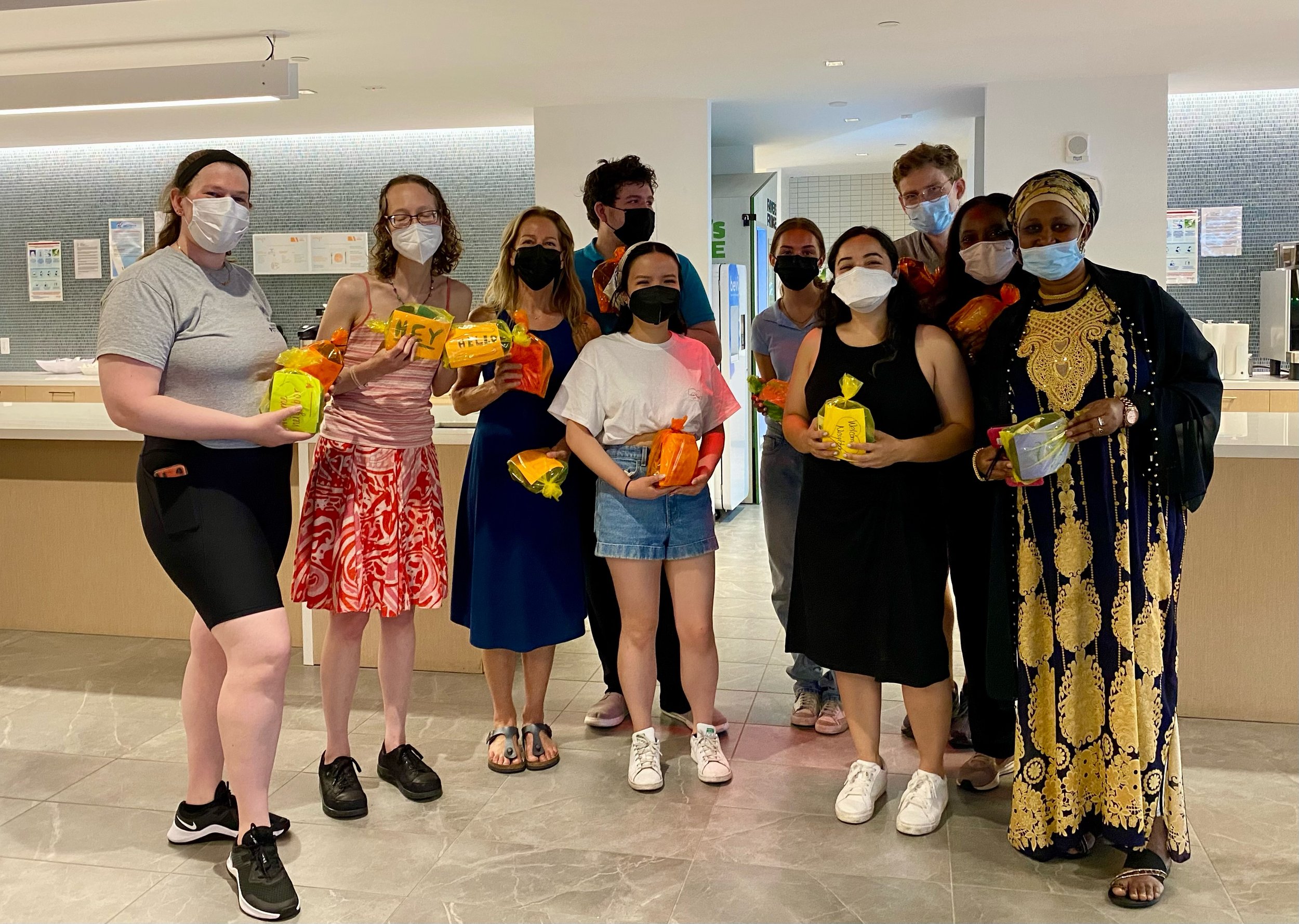
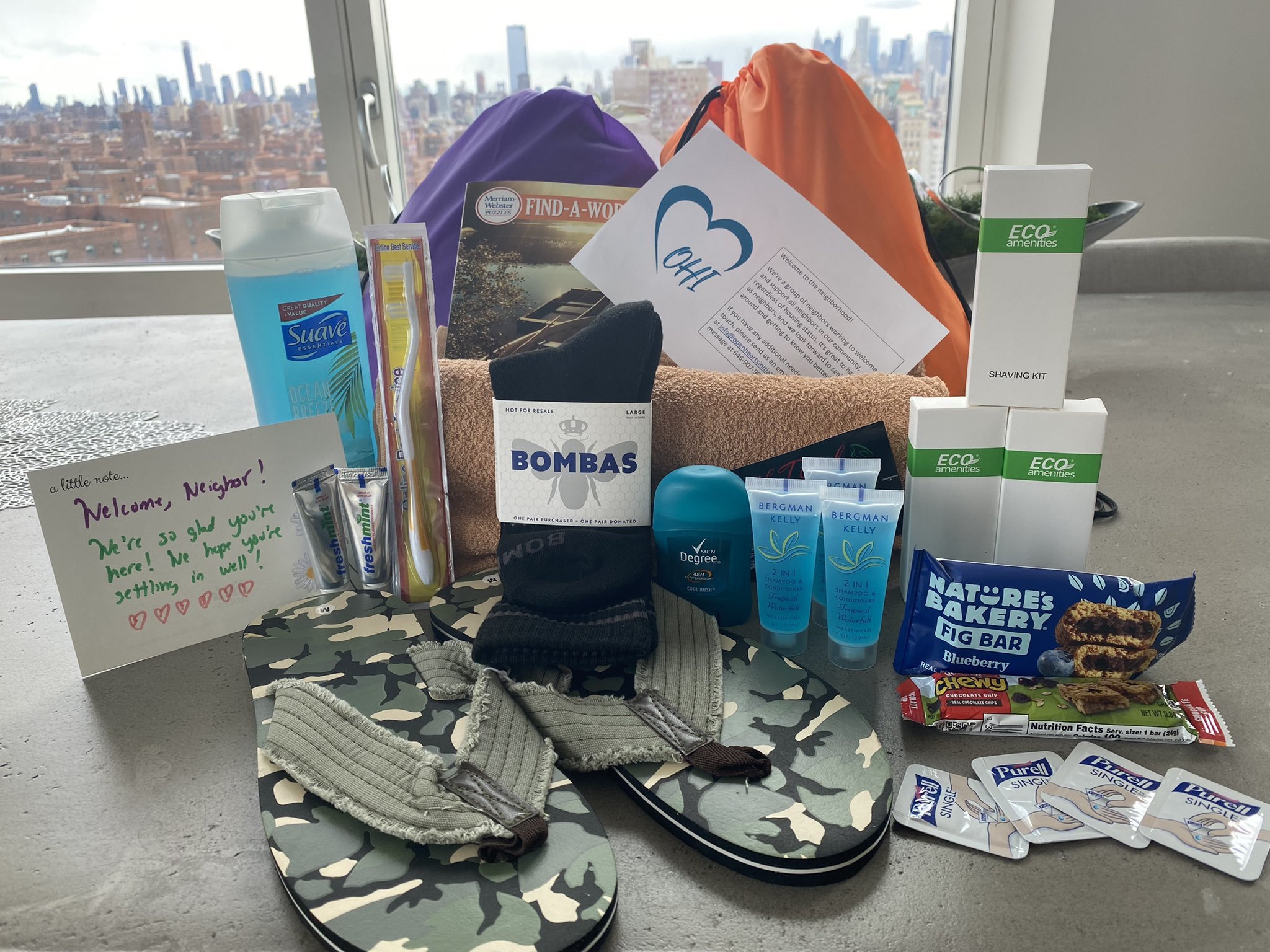
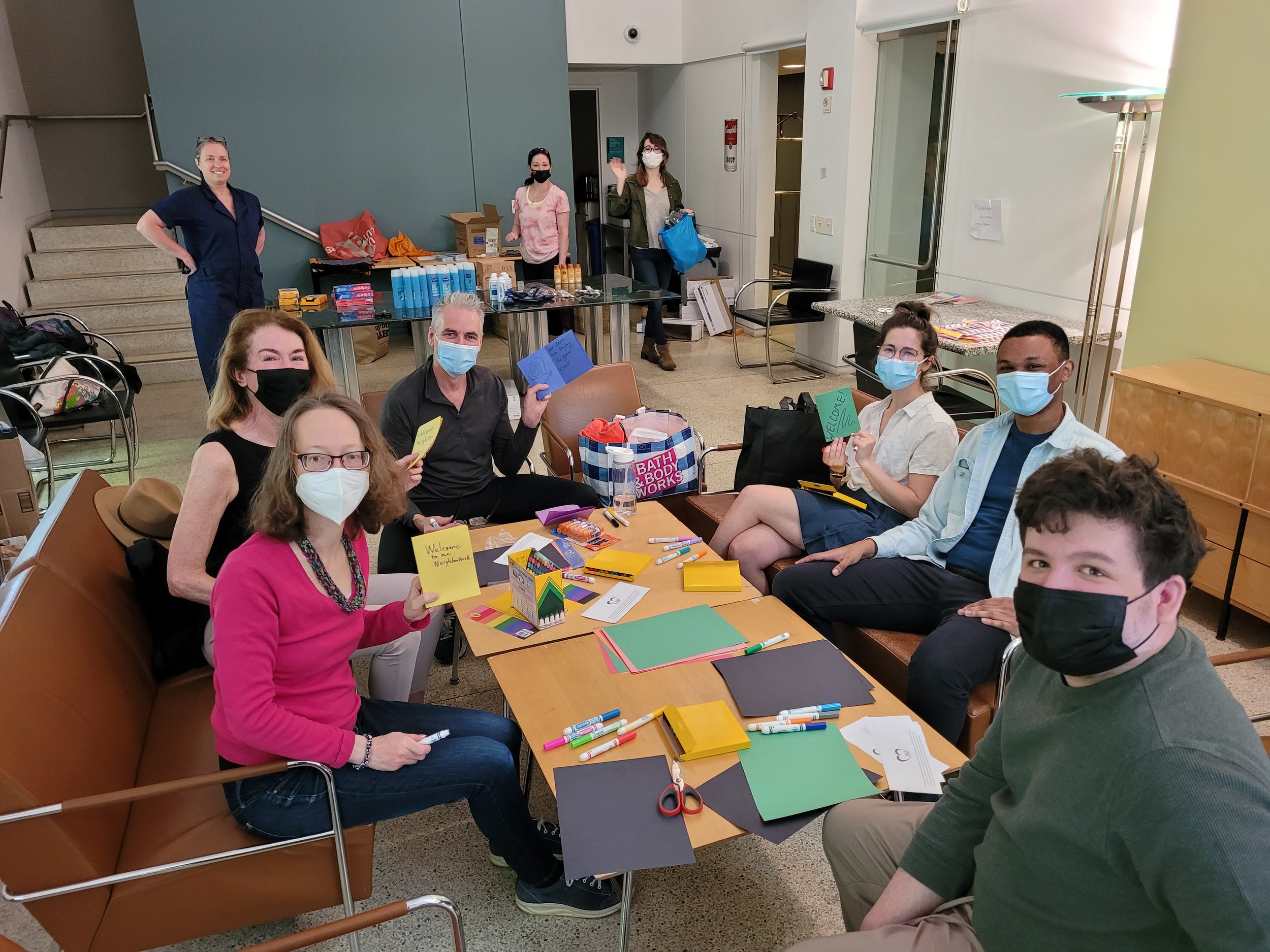
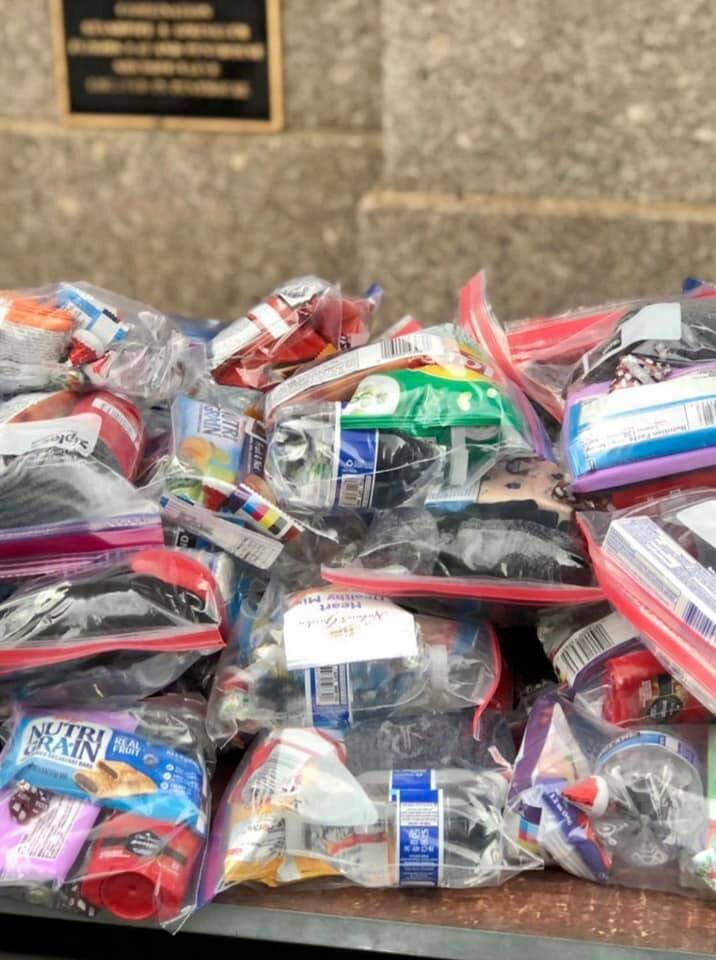
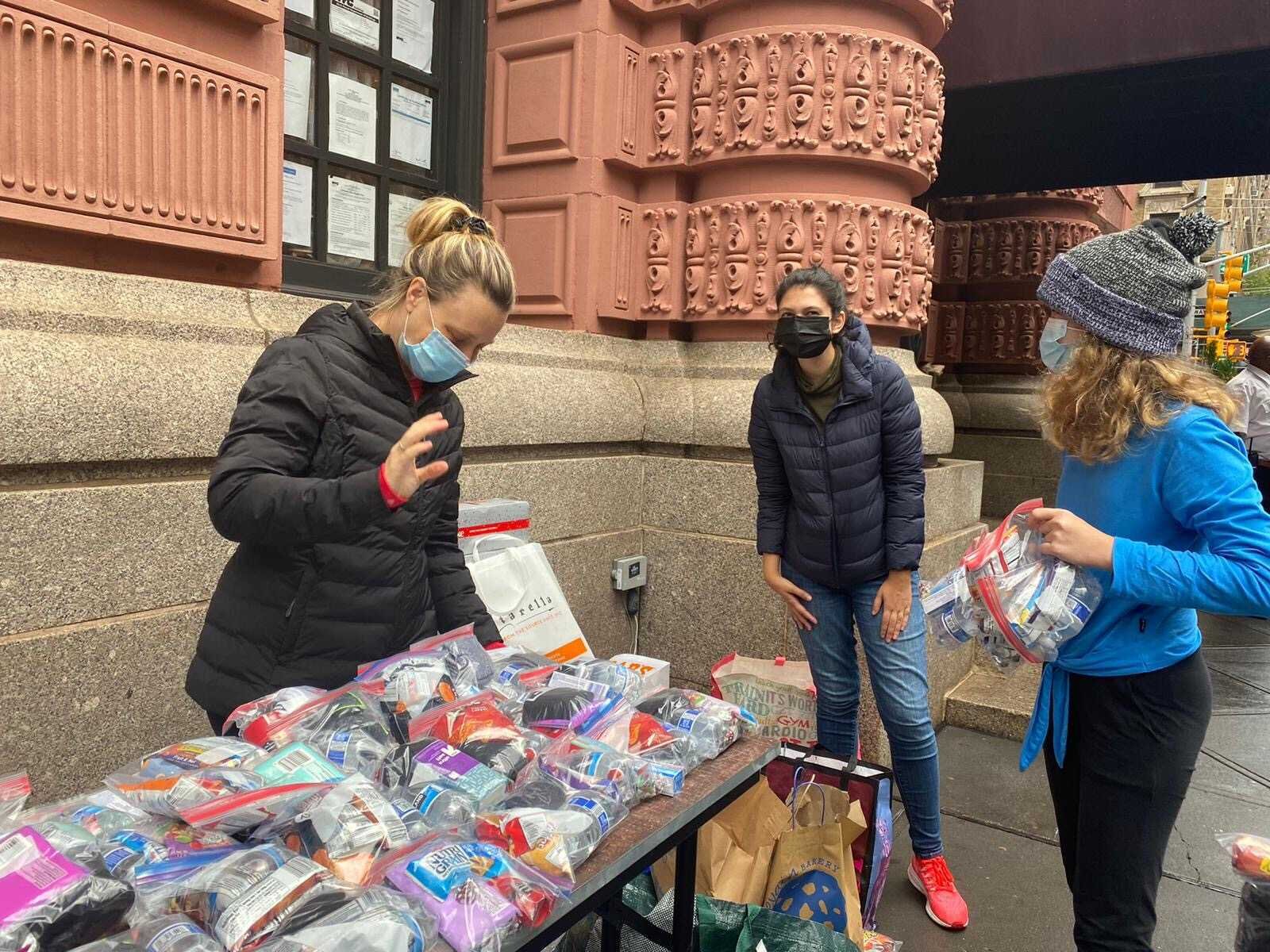


CONTACT US
Have any questions/suggestions about this guide, or want to share photos of your care kit events?


